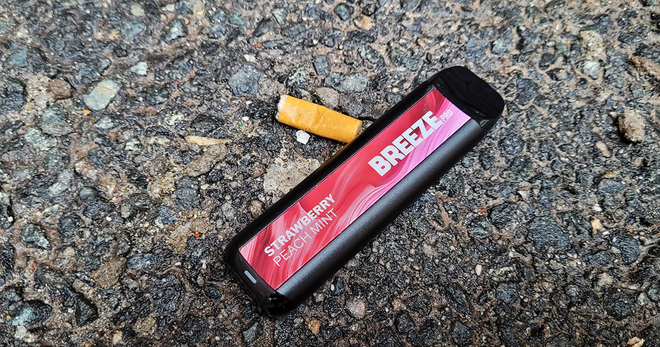How tobacco products harm the environment from their manufacture to consumption
Tobacco products harm the environment in ways that go beyond air pollution and cigarette litter.
The process of growing tobacco, manufacturing tobacco products and delivering them to retailers causes severe and irreversible damage to the environment. Tobacco use also remains the leading cause of preventable death and disease in the U.S.
"From start to finish, the tobacco life cycle is an overwhelmingly polluting and damaging process," states a 2017 World Health Organization report, “Tobacco and its environmental impact: an overview." "It is not just about the lives of smokers and those around them, or even those involved in tobacco production. What is now at stake is the fate of an entire planet."
The report highlights many harmful effects tobacco has on the environment — including deforestation, water contamination and climate change — in five main stages.
Growing and curing
Tobacco growing and curing (the drying of the tobacco leaf) are both direct causes of deforestation, because forests are cleared for tobacco plantations and wood is burned to cure tobacco. Deforestation is a cause of climate change, soil erosion, reduced soil fertility and disrupted water cycles.
A previous investigation into the production, promotion and use of tobacco in developing countries estimated that for every 300 cigarettes produced (about 1.5 cartons), one tree is used just to cure the tobacco leaf.
Manufacture and production
The processes involved in manufacturing cigarettes alone can cause the most environmental damage during tobacco’s life cycle because of the large amounts of energy, water and other resources used. Some of the processes involved in manufacturing cigarettes include:
- Shredding and assembling tobacco, which uses energy and metals for the machines
- Preparing and treating tobacco, which uses thousands of chemicals and chemical additives
- Producing rolling paper, which generates waste and more deforestation
Distribution and transportation
Tobacco grown in one country often gets shipped to other countries and distant sites for processing and manufacturing, which increases carbon emissions. After processing and manufacturing, more energy is used to fuel trucks, ships and planes to transport tobacco products from production plants to retailers. Transporting a finished pack of cigarettes to its point of sale often involves trucks that use diesel gas, a known carcinogen.
Consumption
The smoke generated from burning tobacco, called secondhand smoke or environmental tobacco smoke, contains more than 7,000 toxic chemicals that pollute both indoor and outdoor environments and can be toxic even after the tobacco product is put out.
Thirdhand smoke, which can affect air quality and become more toxic over time, is the residue from secondhand smoke that gathers in dust and on objects and surfaces in indoor environments. These objects can end up in landfills and waste, becoming a further pollution risk to the environment.
Post-consumption
The end of tobacco’s life cycle is tobacco product waste, which includes cigarette butts, the most littered item on earth. With 75 percent of smokers reporting that they dispose cigarettes on the ground or out of a car, an estimated 1.69 billion pounds of cigarette butts wind up as toxic trash each year.
The toxic chemicals from littered cigarette butts leach into the environment and end up scattered along green spaces, sidewalks, roadsides, beaches and waterways. The toxic exposure can contaminate water and poison fish, as well as animals that eat cigarette butts.
Learn more about how tobacco use impacts the environment.
More in harmful effects of tobacco
Want support quitting? Join EX Program
By clicking JOIN, you agree to the Terms, Text Message Terms and Privacy Policy.
Msg&Data rates may apply; msgs are automated.


